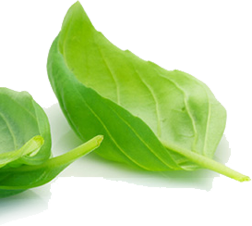



Nutritious diet becomes all the more important for a woman during pregnancy. It governs the health of not only the mother but the foetus as well. It thus, becomes imperative to pay extra attention to what you eat. She needs more protein, iron foliate, and iodine, and folic acid in her diet which is the most important before and after conception. While we are aware of the fact that a pregnant woman requires good nutritious food, we do not really know what it exactly and to what extent. Here we have brought to you a combination of diet that could be very good for a woman’s pregnancy, and will finally lead to a successful delivery. Having a healthy offspring is extremely important so eat well.
Amidst hundreds of dietary suggestions that a woman gets from her near and dear ones about what to eat and what not to eat, those associated with ayurveda are undoubtedly the most reliable ones. Ayurvedic pregnancy diet as discussed under garbhini paricharya is an ideal protocol for pregnant women.
Three types of ayurvedic foods
Ayurveda diet divides food into 3 categories: Satvik, rajasic and tamsic. Satvik food is fresh and nutritious; rajasic diet is energetic; and tamsic diet is somewhat heavy and dull. Of all these, satvik food is the best ayurvedic diet during pregnancy.
.png)
According to ayurveda, parents-to-be must adopt a satvik diet at least 3 months before conception. This diet should consist of fresh fruits such as peach, mango, peers and coconut. Basmati rice is a preferable option for the ayurveda dietary regime during pregnancy. Vegetables such as sweet potato, sprouts, parsley and squash cannot stay out of the list because of their high nutritional value. Kidney and lime beans, coconut, green leafy vegetables, wheatgrass juice, micro-greens and ghee are some other important satvik foods that the ayurvedic pregnancy diet is incomplete without. The mother-to-be is recommended to eat rice mixed with milk in liquid or semi solid form with ghee. Fresh Organic Wheatgrass Juice is extremely beneficial during pregnancy and it’s provides wholesome nutrition to both the mother and the child.
.png)
Every morning of the soon-to-be-mom must start with a shot of fresh organic wheatgrass juice (empty stomach) followed by a glass of fresh juice or a fresh fruit; let porridge and cereals follow. Feel free to treat yourself with some almonds, fruit pieces, or cold milk. Ayurvedic diet during pregnancy would be ineffective without mentioning vitamin c which is greatly significant for both, the mother and the baby. Start your lunch with a salad of carrots, tomatoes and green veggies. After that you may start with rice or chapattis followed by some fresh vegetables and dals.
.png)
Talking about the development of the foetus, the first three months of pregnancy are highly critical. The foetus is in an intense need for growth, thus consumption of milk and other liquids such as water, coconut water and wheatgrass and fruits juices become highly important.
.png)
During the seventh month, it is essential to reduce the intake of salt and fats. Go for rice kanji and ghee instead. Do not forget to enrich your ayurveda diet with cereals such as wheat, rye, oats, sprouts, beans, lentils, whole meal bread, soy beans, and dried peas. These food items have a wealth of proteins and they also constitute the perfect ayurvedic diet for pregnancy. Vegetables such as potatoes and spinach and also dates, almonds, figs, grapes and other dry fruits are also responsible for the sustenance of a foetus.
Pregnancy is an important event in any woman’s life. Selection of the right kind of pregnancy diet can in fact decide the mental and physical health of the baby. Walnut is very good ingredient for the brain development and for a brainy child.
.png)
Pregnancy is a happy and joyous time of life for many women. It can also be a challenging time of life as the mother's body goes through numerous changes in order to create and support the development of a new life. Ayurveda is an excellent addition to the care provided by medical doctors and midwives. Ayurveda creates support for the physical, mental/emotional and spiritual bodies of the mother and her baby.
Nutrition
Food needs to be fresh and wholesome. Fresh vegetables and fruits, whole grains, and dairy products are the mainstay of the diet. Eat organic; avoid packaged foods, irradiated foods or genetically engineered foods. Food should be delicious and usually cooked because it is easier to digest. Vegetable intake is extremely important. Dark, leafy greens like collards, kale, broccoli and green lettuces as well as squashes, sweet potatoes, and carrots should be eaten at least daily. A broad range of vitamins and nutrients will be provided by these vegetables. Apart from this drinking wheatgrass juice daily empty stomach is very very beneficial. "The mother should be given whatever she wants during this period except perhaps those that are harmful for the foetus.', Denial of desires can lead to aggravation of vata. Even things which are harmful can be used if they are processed or combined with things that are wholesome. Gratifying her desires will result in a strong, long-lived, virtuous son. "A non-gratification of any sensual enjoyment by its mother during gestation tends to painfully affect the particular sense-organ of the child.
.png)
Eat all 6 tastes (sweet, sour, salty, pungent, bitter, and astringent), but emphasize sweet, sour, and salty. Examples include dairy (whole milk, butter and yogurt), sweeteners (honey and natural sugar), oils (olive oil and ghee), fruits, vegetables, beans (mung beans or split mung dahl), spices (fennel, cumin and ginger), and nuts (blanched almonds).
How food is eaten is just as important as what food is eaten. The mother should feel light, happy and satisfied after her meal. She should not feel uncomfortable, have gas or pain, or feel dull. Recreations include eating the main meal at noon, waiting at least 3 hours between meals, and sitting down while eating. Also, she should taste the food, not have distractions, and avoid overeating.
.png)
Sattvic foods will build ojas. These include many of the ones previously listed but most importantly include milk and ghee (clarified butter). Milk should be taken warmed with cardamom or turmeric added for better digestion. It is recommended to take it as a snack and not with a meal. Ghee is a nourishing food. It promotes digestion and is digested quickly. Sattvic food is especially good for building ojas during the pregnancy. Ghee, milk, dates, apricots, and sesame seeds are all recommended. Tamasic foods often produce tama instead of ojas. These are hard to digest foods like meat, eggs, alcohol, aged cheese, leftovers, fermented foods, mushrooms, onions, garlic, and peanuts and they should be avoided.
.png)
It is important to keep the fetus nourished throughout pregnancy. Dr. David Bruker presented research shows low birth weight may be linked to disease later in life. The theory is that if nutrients are insufficient then they will be diverted from organ development to more important areas like brain development During the time an organ is developing it needs to receive correct nutrition or it may never develop properly. That’s why drinking fresh wheatgrass juice is very good specially during pregnancy.
Weight gain is extremely individualized '"The most important factor seems to be a steady weight increase on healthy foods." If the diet is high-quality then there shouldn't be any worries about whether the weight gain is too high or too low. It is important to pay attention to the body's messages. Eating when hungry, even if in the middle of the night is important.
.png)
The greatest care is required during the first trimester and last trimester. During the first trimester, emphasis should be placed on nurturing the uterine bed by consuming foods that help the rasa and rakta: juicy fruits, wheatgrass juice, coconut water, and milk. During the last trimester, there should be less fat, less salt and less water in the diet.
"Excellent nutrition includes pure water, controlled breath, abundant light, loving and respectful relationships, beauty and harmony in daily life, positive, joyous thoughts, and vital foodstuffs."
.png)
Important facts to remember are that 200 to 300 more calories each day are needed during pregnancy, a variety of foods should be consumed and enough protein should be eaten. Three servings each day are recommended of protein. Nutrients to focus on include calcium, iron, vitamin C, folic acid, vitamin A and vitamin Bl2. The body needs 15% more energy, Khalsa recommends 300-500 more calories each day. If there is any doubt about adequate nutrition, drink wheatgrass juice empty stomach every day. Take organic milk before going to bed for the extra calcium the baby needs.
Daily Routine
Two of the main components of a daily routine are going to bed early and getting up early. It's important to go to bed during the kapha time of day (6pm to 1Opm). It is easier to fall asleep and sleep will be more restful. It is important to wake up before the kapha time of day (6am to 1Oam). Energy, vitality and alertness are greater if waking before 6am. Naps should be avoided except during the hot summer months. Rest though should be frequent and before feeling tired. Rest is especially needed in the first two months of pregnancy as well as the last two months.
.png)
Abhyanga, a full-body self-massage, is important to perform each day. Stress and fatigue that may push vata dosha out of balance are relieved through abhyanga. Warm sesame oil by placing a container in warm water. Apply oil with an open palm using long strokes on the long bones and circular strokes on the joints. Massage all parts of the body and very gently apply oil to the abdomen. A warm bath or shower after the abhyanga helps open the channels of circulation. Massage of the nipples is recommended after the 4th month.
.png)
Foot massage can also be used to help balance vata. Energy will be kept flowing throughout the body and all systems will be stimulated. This would be an excellent activity for the partner to perform. Use sesame or almond oil. Warm baths are also an option that can relax the muscles allowing better circulation and preventing stagnation of toxins.
A sitz-bath is recommended a few times each week or every night for the last 6 weeks prior to birth. A handful of linden flowers steeped in one liter of water and added to the bath will aid in softening the perineum.
.png)
Walking, swimming and yoga asanas are the best exercises. All normal asanas can be practiced during the first trimester. During the 2nd and 3rd trimesters, do not put pressure on the abdomen; examples would be cobra (bhujangasana) and bow poses (dhanurasana). Inverted postures should not be practiced during the 3rd trimester. The best asanas encourage pelvic and hip-opening; these can be done sitting or standing. Examples would include bound angle sitting pose (baddha konasana) and open legs forward bend (upavista konasana). Postures that promote flexibility and strength of the spine are also good.
Some yoga studios offer special classes for pregnant mothers. Yoga not only helps a pregnant women exercise but teaches her how to relax into discomfort. Yoga is nurturing and teaches us to relate to our bodies and ourselves with compassion and respect. Prenatal yoga empowers a woman as she prepares for childbirth and parenthood by turning her attention inward strengthening her confidence, her ability to trust her intuition, to speak her truth for the health and well-being of herself, her baby, and her family.
.png)
Meditation
During pregnancy, entrainment occurs. "Entrainment is the tendency of natural cycles to come into coordination with each other." Bonding between mother and baby occurs as the two entrain; their biological rhythms matching each other. A research project that studied the effects of mothers who practiced Transcendental Meditation and their babies quiet alertness showed that those who practiced this technique had double the quiet alertness of those who did not meditate.
The mind must be trained in order to experience relaxation of the body. "We have found that easy, fast birthing is highly dependent on the ability to relax and surrender to the process of birthing." The mind can be calmed by concentrating on the breath. Allow breath to move in and out of the body as waves move in and out from the shore. "When we relax the body and bring the breath into a relaxed rhythm, we can then begin to hear the message of the internal voice and can even heal our aches and pains.
''The aura of a pregnant woman is one of the easiest to see, for it is particularly luminous and full of gold.'' ''The gold colour in the aura indicates that the pregnant woman is intensely connected to high spiritual beings who support and foster the embryo. Pregnancy is therefore a privileged time for spiritual growth. Itis a time to do a lot of meditation and enlightening reading, and to work at developing intuition and perception.
Happiness
Maternal attitude is the most important factor in determining the child's physical and emotional well-being. Growing up in India, the family and friends of the pregnant mother; they provided her with much emotional support. The family often cooked special treats and friends would bring gifts and sweets. The culture believes that for the baby to be happy, the mother must be happy. The mother would take more rest and the father and in-laws would help out with household chores.
.png)
Music can play a role in happiness. Several studies have shown that uplifting, soothing music helps increase the baby's intelligence. "The sound of the veena (Indian string instrument which is held by the Goddess Saraswati), flute and Samaveda mantras gives health to the pregnant woman and the child within." An example of a CD is "Garbh Sanskar : Blessings For The New Arrival".
Baby showers over 5 separate months are traditional in India. Starting in month 3, the family and friends hold a shower to celebrate the five senses, one each month. Usually they are in this order: sight, taste, hearing, smell, and touch. Each shower celebrates a sense by giving gifts that stimulate that sense organ.
Babies are able to remember things from their neonatal experience as well as learn while in the womb. Children have memories of incidents, they remember music that was played and they've shown knowledge of academic subjects that were taught. Babies also remember painful memories. Those born to parents who had fights were more likely to have health issues. Those exposed to hard rock would move violently in the womb.
.png)
During the 4th month, it is important for the mother to have happy relationships especially with the father. This is due to the heart developing as the seat of consciousness. If there are disturbances during this time the baby's heart could develop defects. Before this time the baby is connected by astral projection only but after this time the mental body of the baby is connected to the physical body.
About the 5th month, the mother's navel begins to protrude out. The navel point is where 72,000 nerve endings unite just under the navel. These nerve endings become more exposed to outer vibrations. The mother's ability to feel her environment and those around her increases dramatically. This sensitivity needs to be honored and used as a method of protection for both mother and baby.
During the 8th month, the ojas moves between mother and baby. It is important to rest during this time and eat ojas building foods. The mother shouldn't waste energy and should let the energy go inward She should spend time in nature as well as chant and meditate. Things to avoid include overwork, worry, anger, hunger, excessive sex, sorrow and devitalized food.
.png)
"Ayurvedic teachings promote a proper attitude of worship towards all pregnant women's. The mother needs a "clear joyful spirit" in a clean body. She should wear clean and white garments. She should avoid dreadful sights, painful or agitating sounds. Agitating emotions of the mind are dangerous (anger, fright, etc). She should not carry a heavy load or talk in a loud voice. The food she eats should be "...sweet, palatable, well-cooked, prepared with appetizing drugs and abounding in fluid substances. "The child in the womb feels pain in the same part of its body as the one in which its mother feels any; whether this (pain) may be from an injury or through the effect of any deranged principle (dosa) of her organism."
Challenges
Many of the health challenges of pregnancy can be prevented by paying attention to nutrition. Low blood sugar contributes to mood swings and morning sickness. Insufficient calcium contributes to hypertension, backaches and severe labor pains. Lack of nutrients also contribute to varicose veins, constipation, anemia, hemorrhoids, and skin discoloration. Pre-eclampsia can be linked to acute malnutrition.
The best method of taking care of challenges is to resolve imbalanced conditions before pregnancy. Pregnancy increases all three doshas: vata with change and expansion, pitta with metabolism and heat increased, and kapha with increased bulk of body. These changes effect the woman's constitution as well as interacting with the baby's constitution and environmental influences. Therapies and herbs which distwb apana vata must not be used. Prevention is the easiest approach to health. Best is to start eating organic wholesome food and start drinking wheatgrass juice at least 6 months prior to conceiving.
Challenges can still occur despite the best efforts. These can include backache, high or low blood pressure, painful breasts, constipation, heartburn, haemorrhoids, indigestion, kidney problems, leaking urine, nausea and vomiting, nerves, insomnia, swelling of hands and feet, tingling and numbness of limbs, varicose veins, and other complications.
The classical texts describe 9 diseases peculiar to pregnancy: anorexia, nausea, dryness of mouth, vomiting, edema, fever, anemia, retention of urine and diarrhoea.

Treatments
"A pregnant woman is to be treated very cautiously as if one is walking with a pot full of oil, in hand without letting a drop to fall." Drugs, diet and other therapies should be soft, sweet, cold, pleasant and tender. "She should not be administered emesis; purgation, sirovirecana (therapy for the elimination of dosas from the head) and raktamoksana (blood-letting).
"Spotting of blood during any month should be considered serious. Treatment for this can be found in the Masanurnasik Chikitsa.
Herbal Ghee taken In India

In southern India it is common to prescribe the woman to take one tablespoon of herbal ghee daily during the 2 and 3"' trimesters. During the 4"' and 5th months, Kalyanakam Ghrut is taken to develop the mental faculties and bodily systems. Itprevents anemia and also congenital abnormalities. During the last months, Thanka Sree Ghrut is taken to ensure complete development, a full term normal delivery and good fortune for the child.
Preparing for the Baby
Pre-conception and pregnancy are the times to make all the plans for the delivery and postpartum recovery. Guidance may be needed concerning whether to use a doctor or a midwife, where the delivery is planned to take place, and who the mother wants present during the delivery. Consideration should be given to whether a birth attendant is desired. Decisions should also be made for how the mother and baby will be cared for in the 40 days after birth.
Big changes are not recommended during this time. Many families choose to move house during pregnancy; one study showed 79% of expectant mothers were planning a move. The increased vata during "...a move can actually delay a mother's bonding with her baby after birth, or contribute to postpartum depression.
Conclusion
A good and healthy diet is one of the most important aspect of pregnancy. Ayurveda provides significant assistance to women during pregnancy and it is a complementary addition to the care provided by medical doctors and midwives. Mothers-to-be undergo many changes to their physical and emotional being during their 9 months of pregnancy as they create and support a new life. Ayurveda provides nutritional advice as well as practices such as meditation, the daily routine, yoga asanas, and considerations for happiness. Herbs can be used to assist the pregnant mother to feel her optimum as well as overcome challenges. Extreme care must be exercised though when choosing to take herbs and several resources should be referenced before considering an herb safe to use. The trimester it is allowed, quantity and part of plant all need to be researched. Mothers who already practice Ayurveda will simply expand their knowledge and application while those new to Ayurveda will find it to be of assistance during their life changes.

2018-10-25
2017-10-18
Comment Form